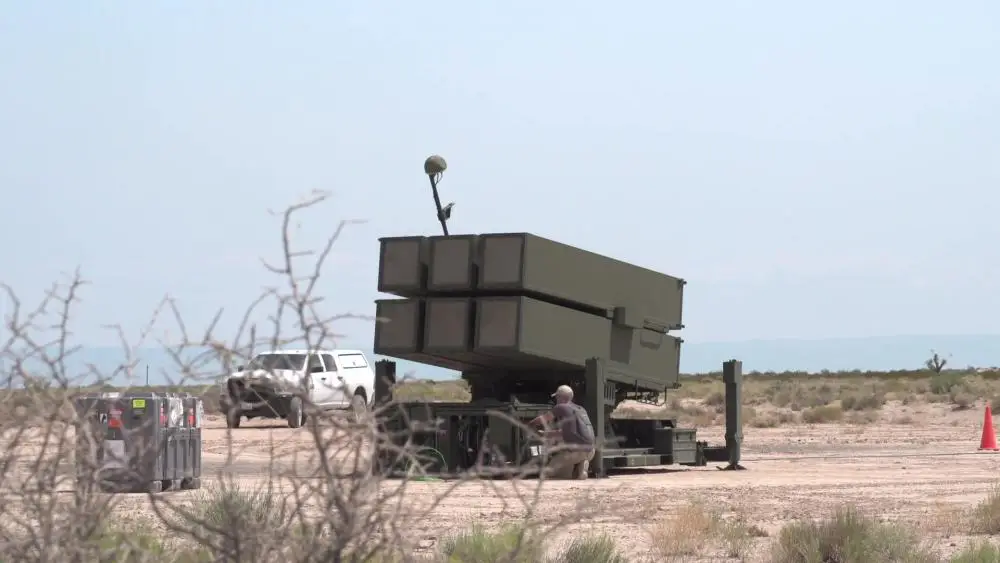Raytheon Technologies contractors set up and functions check a NASAMS (National/Norwegian Advanced Surface to Air Missile System) launcher in support of Advanced Battle Management System (ABMS) Onramp 2 at White Sands Missile Range, New Mexico, on Aug. 26, 2020. Several NASAMS has quietly defended Washington, DC since 2005 and are used to protect air space around the White House. There are 11 official operators, NASAMS is in operational use in Norway, Spain, USA, the Netherlands, Finland and one undisclosed customer. The system is in production for Oman, Lithuania, Indonesia, Australia and Qatar.
ABMS is an interconnected battle network where data is brought into a cloud-based system to assist operators in making quicker integrated decisions in congested and contested spaces. ABMS is the U.S. Air Force’s piece of the military’s fledgling Joint All Domain Command and Control concept. The vision involves networking every shooter and sensor to a cloud computing environment and using artificial intelligence to ensure that relevant information is immediately sent to whichever platform needs it. Since February, the U.S. Air Force has published three separate broad area announcements seeking technologies that could be funneled inside the Advanced Battle Management System.
NASAMS (National/Norwegian Advanced Surface to Air Missile System) is a distributed and networked medium to long range air-defence system. NASAMS was the first surface-based application for the AIM-120 AMRAAM (Advanced Medium Range Air-to-Air Missile). NASAMS 2 is an upgraded version of the NASAMS air-defence system and it has been operational since 2007. A complete NASAMS battery consists of 12 missile launchers (LCHR) (each one carrying six AIM-120 AMRAAM missiles), eight radars (AN/MPQ-64 Sentinel F1 Improved Sentinel X band 3D radar), one fire control centre (CTOC), one electro-optical camera vehicle (MSP500) and one Tactical Control Cell (TCC) vehicle.
The system integrates US-built MPQ-64 Sentinel air defense radar and AIM-120 AMRAAM missiles with an indigenously developed Battle management C4I system called FDC, short for Fire Distribution Center. The FDC connected to a MPQ-64 radar forms an “Acquisition Radar and Control System” (ARCS). The missile has a horizontal range of up to 25 km. AMRAAM missile range:
• AIM-120A/B: 55–75 km
• AIM-120C-5: 105 km
• AIM-120C-7: 120 km
• AIM-120D: 180 km
















